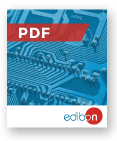
NEW Renewable Energy leaflet
With our complete Renewable Energy area, EDIBON gives answer to the academic demand for teaching and learning concepts of Energy, in an easy and practical way.
HerunterladenErneuerbare Energien sind saubere, unbegrenzte und zunehmend wettbewerbsfähige Energiequellen. Sie sind Energiequellen, die auf der Nutzung von natürlichen Ressourcen basieren: Sonne, Wind, Wasser oder pflanzliche oder tierische Biomasse. Sie unterscheiden sich von fossilen Brennstoffen vor allem durch ihre Vielfalt, ihren Reichtum und ihr Potential für den Einsatz in jedem Teil des Planeten, vor allem aber durch die Tatsache, dass sie keine Treibhausgase produzieren.
Mehr sehenDank der Entwicklung von erneuerbaren Energien ist es möglich, Klimaveränderungen zu bekämpfen und ihre verheerenden Auswirkungen zu vermeiden. Die Globale Erwärmung durch Treibhausgase ist eine Tatsache, und deshalb ist eines der Ziele der Vereinten Nationen, bis 2030 den universellen Zugang zu Elektrizität zu erreichen.
Es gibt verschiedene Arten von erneuerbarer Energie wie z.B. Windenergie, Photovoltaikenergie, Wasserkraft, Biomasse und Biogas, Geothermische Energie, Triebwerksenergie, Wellenleistung, Bioethanol und Biodiesel. Biodiesel.
Angesichts der Bedeutung von erneuerbaren Energien sind ihre Hauptvorteile hervorzuheben: sie emittieren keine Treibhausgase, sind unerschöpflich und immer weniger teuer, verringern die Energieabhängigkeit und haben einen günstigen politischen Horizont.
Aufgrund der Verbreitung von erneuerbaren Energien und der Notwendigkeit, effizientere und flexiblere Energiesysteme zu schaffen, wird dezentrale Erzeugung immer populärer. Dies ist der Ursprung des Konzepts Mikro-Grids. Es handelt sich dabei um bidirektionale Stromerzeugungssysteme, die meist auf erneuerbaren Energien basieren und die Elektrizität von verschiedenen Punkten der Energieerzeugung durch Digitaltechnik an die Verbraucher verteilen und die Integration von erneuerbaren Energien begünstigen.
Dank dieser technologischen Evolution, die erneuerbare Energien hervorgebracht hat, und ihrer Dezentralisierung ist es gelungen, das Elektrofahrzeug in die heutige Gesellschaft zu integrieren. Dies wiederum hat die Treibhausgase (CO2) und die Kosten signifikant reduziert und die Zuverlässigkeit des Elektrosystems.
Siehe Produkte